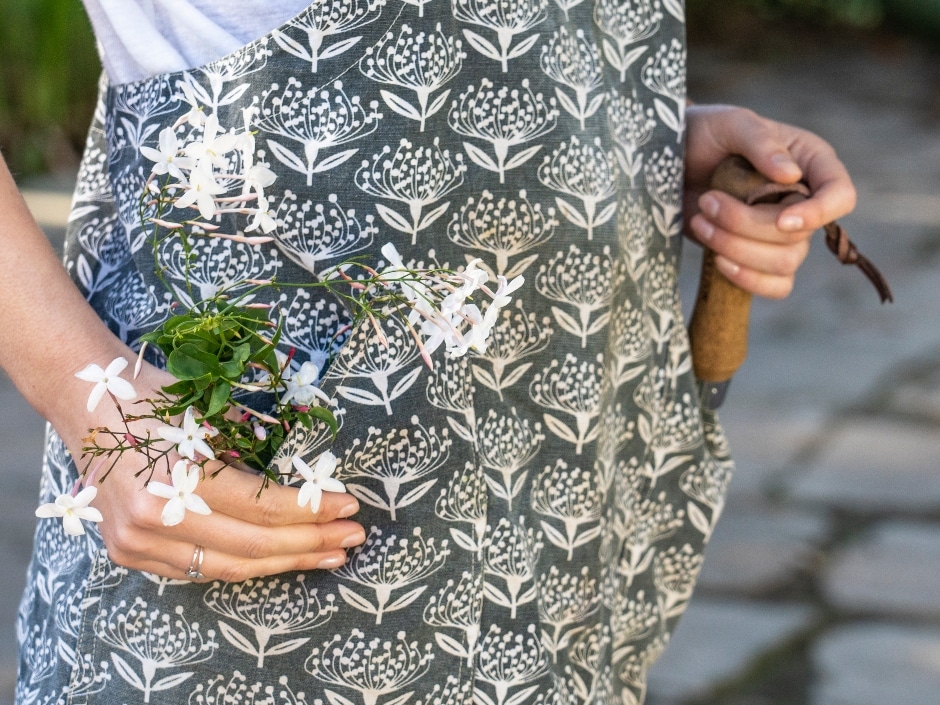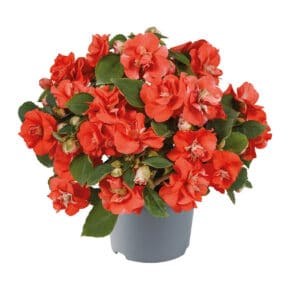The Fragrant Jasmine
DIY and how-to

The Fragrant Jasmine
Plant jasmine and add the delight of sumptuous fragrance to your garden.
The name jasmine is derived from the Persian ‘yasmin’, meaning a gift from God, and is so named because of the intense fragrance of the blooms of the Persian or common jasmine, Jasminum officinale. There are over 300 Jasminum species that occur mainly in the tropical and warm temperate regions of the world – including South Africa – although a few are found in countries with cold winters.
They produce star-shaped blooms – mainly yellow or white – that are usually highly fragrant. The leaves can be either evergreen or deciduous. Most species grow as scrambling climbers or sprawling shrubs, and can be planted in the garden as either a climber, a shrub or massed as ground covers in large gardens – your pruning will determine the growth habit. Most will also grow well in containers.
The majority of jasmine species are not frost tolerant. They grow best in moist, humus-rich, well-drained soil, and a position in full sun and semi-shade. Apply a general fertiliser twice a year, in spring and summer. After flowering, shape the plant by pruning. Propagate from cuttings during the growing season.
Choose a Jasmine
A number of jasmine species are available in South Africa. Just make sure the jasmine you choose will tolerate the frost levels in your garden.
Jasmines for warm, frost-free gardens
- Common white jasmine (J. officinalis). This water wise jasmine from the Middle East is a deciduous to semi-evergreen lanky shrub that generally grows to a height of 4,5m. It can easily reach heights of up to 12m when grown up structures such as trees, trellis or arbours. Heavily scented white flowers about 2cm wide are borne in clusters from early spring to early autumn. The flowers are followed by poisonous black berries.
- Azores jasmine (J. azoricum). From the Island of Madeira, this 2-3m shrubby evergreen climber is fairly tolerant of dry conditions. It bears fragrant 2,5cm wide blooms in summer.
- Red jasmine (J. beesianum). This 4m tall deciduous climber from China needs to be trained up a support. Fragrant red and pink blooms are borne in spring and summer.
- Arabian jasmine (Jasminum sambac). As this jasmine is found in the Philippines, India, Myanmar and Sri Lanka, the common name is rather misleading. It is an evergreen climber reaching up to 3m tall. In subtropical gardens it flowers almost continuously all year round. The 3cm-wide flowers are white, strongly scented, and fade to purple.
Jasmines for frosty gardens
- Chinese jasmine (J. polyanthum). This is probably the most widely known jasmine in South Africa because it tolerates temperatures of -7ºC. In such a climate this 4-5m climbing jasmine is deciduous. An abundance of reddish-pink flower buds appear in late winter and early spring, followed by fragrant five-petalled star-like white flowers about 2cm in diameter. It tolerates more shade than other jasmines and is fairly water wise.
- Winter jasmine (J. nudiflorum). This 1-2m shrub from China was often used as a hedge plant or windbreak in the older and larger gardens of the past. As it tolerates severe frost (-18°C) and survives periods of drought, it is valuable garden plant. In addition it provides colour in winter with its small bright yellow, unscented blooms. In cold regions it is deciduous.
- Stephan’s jasmine (J. x stephanense). This vigorous evergreen climber grows to 8m or more. In spring and summer it bears small, fragrant white to pale pink blooms. It tolerates temperatures of 0°C, and occasional mild frosts, which may cut it back, but it will re-grow quickly.
Indigenous Jasmines
Southern Africa has a number of jasmine species. They occur in frost-free parts of the country and so will not grow in frosty gardens.
- Starry wild jasmine or bush jasmine (J. multipartitum). This climber bears highly scented blooms from late winter to midsummer which makes it a popular garden plant. The flowers are solitary but occur in profusion. They are white with deep pink beneath. Starry jasmine will climb readily if provided with a trellis or some other support. If not supported it will form a dense bush. It grows well in a container.The cultivar J. multipartitum ‘Evening Star’ has larger porcelain-white flowers with a rich pink reverse.
- South African jasmine (J. angulare). In summer this evergreen vigorous climbing jasmine bears clusters of fragrant white starry tubular flowers that are 3cm wide. It can withstand temperatures down to 0°C.
- Bushveld jasmine (J. breviflorum). This is a scrambling shrub that can be trained as a climber. In spring and summer it bears sweetly scented small white flowers. It occurs in the Bushveld.
- Climbing jasmine (J. fluminense). This is a large and vigorous evergreen climber with small fragrant white blooms. It flowers from spring into summer.
– Rock or hairy jasmine (J. stenolobum). This is an evergreen climber that can also be kept pruned to a shrub shape. The spring and summer blooms are highly fragrant. They are white with pink on the undersides of the petals. This jasmine prefers well-drained soil and tolerates dry condition, but not frost.
A false Jasmines
- Star jasmine (Trachelospermum jasminoides). It is worth noting that the so-called star jasmine is not in fact a Jasminum species. Its botanical name is Trachelospermum jasminoides. The latter part of the name means that it resembles a true jasmine, and indeed the spring and summer flowers are star-shaped and highly scented. Because this scrambling evergreen climber from China tolerates moderate frost (-5°C) it is a commonly grown plant in frosty gardens.
You might also like
Shop online
-
- Sale!
ROTWEILER JUNIOR 12KG
- Original price was: R1,642.99.R1,479.99Current price is: R1,479.99.
- Add to cart Learn More
-
WALL RACK 5 TIER
- R929.99
- Add to cart Learn More




